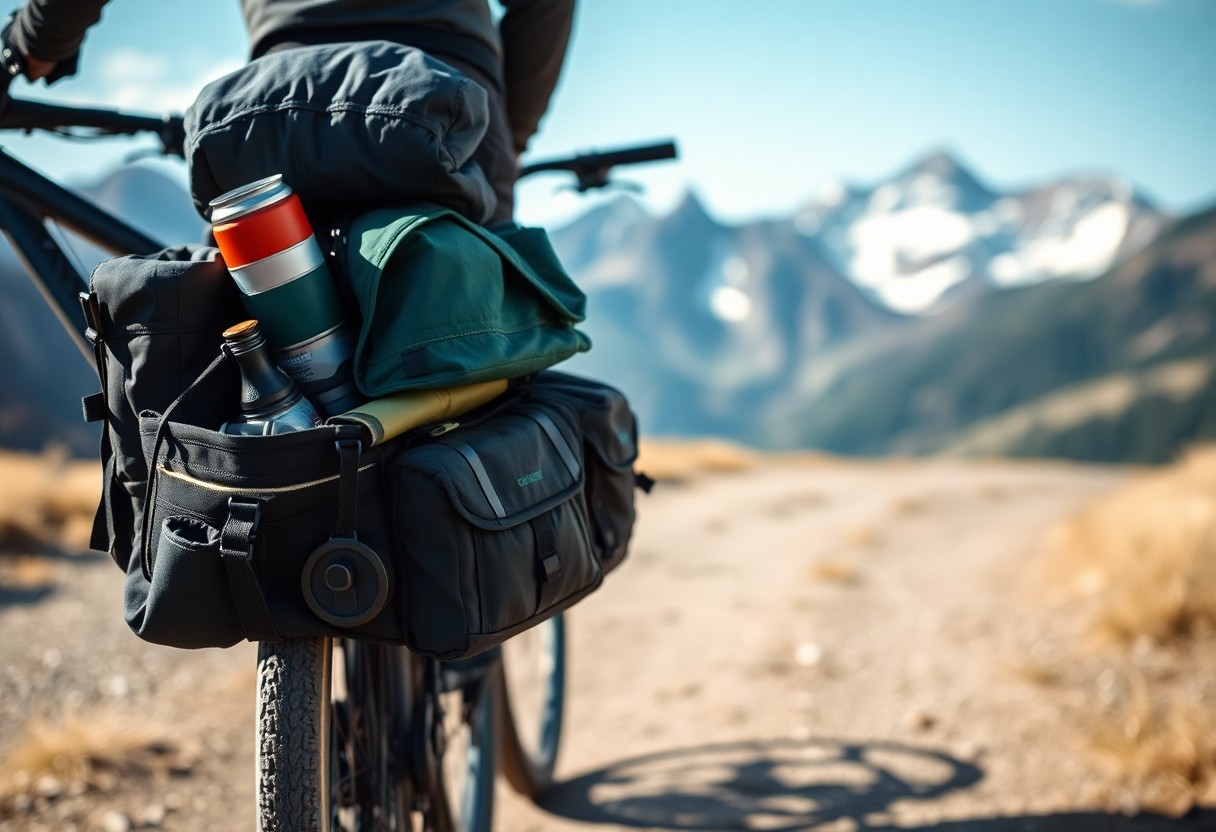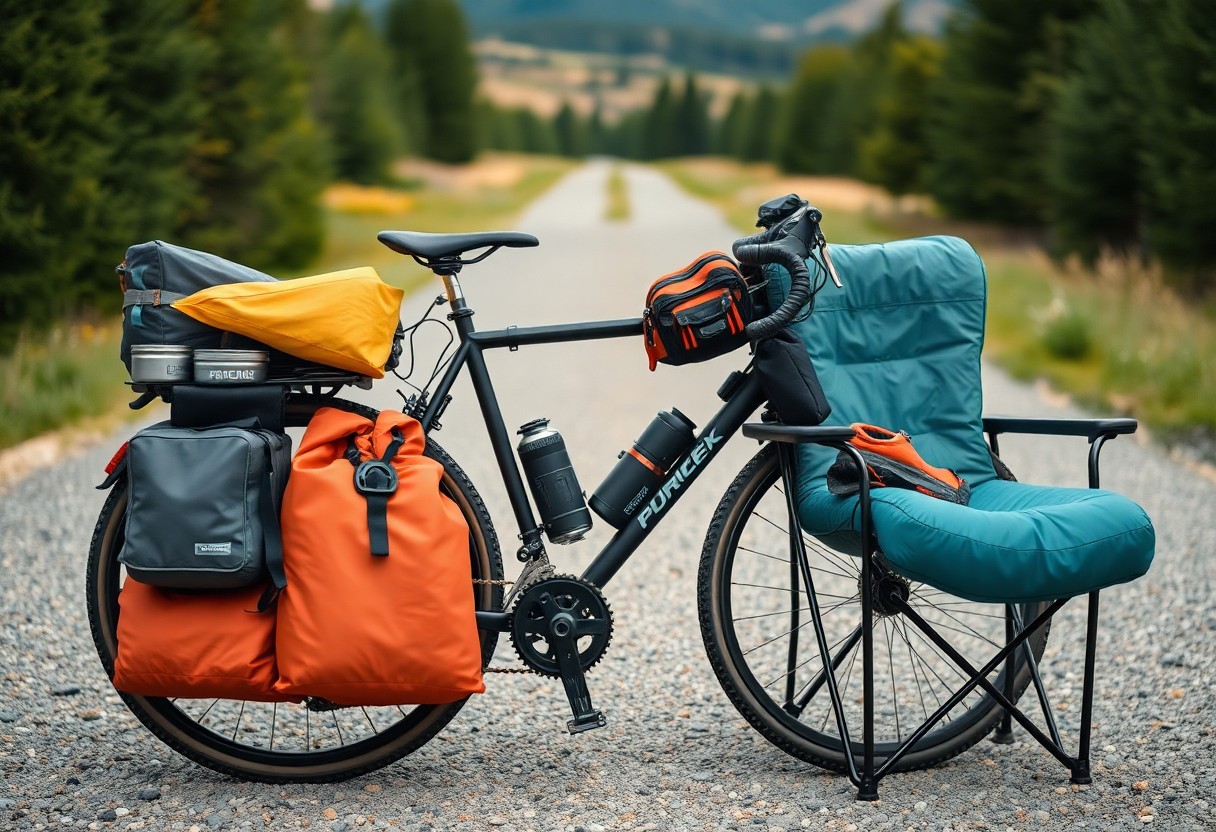Over the course of your bikepacking adventures, you may find yourself wrestling with the dilemma of lightweight gear versus comfort. It’s imperative to strike a balance that enhances your experience while reducing fatigue. In this post, we’ll guide you through the advantages and disadvantages of each approach, helping you determine the right packing strategy for your journey. Whether you favour minimalism or luxury, understanding your personal preferences and needs will ensure you enjoy the ride without unnecessary burdens.
The Lightweight Dilemma: Why Less Can Be More
Packing light often presents a tough dilemma for bikepackers. The thrill of adventure can be overshadowed by the weight of unnecessary gear weighing you down on long rides. Embracing a minimalist approach can significantly enhance your experience, allowing you to navigate varied terrains with greater ease and agility. By stripping away excess, you create space for spontaneity and freedom on the road, elevating your overall journey.
Benefits of Packing Light
Opting for a lightweight packing strategy streamlines your gear and reduces fatigue, enhancing your endurance and enjoyment. With less weight on your bike, you’ll tackle hills and long distances more efficiently, empowering you to explore more remote areas with ease. This not only boosts your physical comfort but also encourages a more leisurely pace, enabling you to appreciate the scenery and moments that make bikepacking so rewarding.
Essential Gear for Minimal Weight
Focusing on imperative gear is paramount for achieving minimal weight without sacrificing functionality. Prioritise versatile items, such as a compact sleeping bag, a lightweight tent, and multi-use tools. Each item should serve multiple purposes, ensuring you carry only what’s necessary. By choosing high-quality, lightweight materials, you can significantly reduce the weight of your gear while maintaining durability and comfort.
A fantastic example of imperative gear that balances minimal weight and effectiveness includes a down sleeping bag and a tarp instead of a traditional tent. A well-constructed down sleeping bag can pack down small while offering superior warmth, making it a favourite among minimalist bikepackers. Similarly, a tarp can provide shelter for cooking or resting without the bulk of a full tent system. Investing in high-performance gear designed for lightweight travel can transform your bikepacking experience, allowing you to be nimble and adaptable on the trail.

Comfort’s Role in Enjoying the Journey
Finding the right level of comfort plays a significant role in your overall bikepacking experience. A well-padded saddle or supportive footwear can mean the difference between a joyful ride and a painful trek. When your body feels good and well-supported, you are more likely to enjoy the stunning landscape around you and stay motivated during longer rides. Prioritising comfort translates to fewer distractions, allowing you to immerse yourself in the adventure and create lasting memories.
Strike a Balance: Essentials for Comfort
Achieving that equilibrium between lightweight and comfort involves careful selection of gear. Opt for a high-quality sleeping mat that combines portability with adequate insulation, and consider a hammock if you value rest. A well-fitted pair of padded shorts and moisture-wicking base layers can significantly enhance your cycling experience, allowing for breathability and ease of movement. Equip your bike with ergonomic grips and adjust the saddle height to avoid discomfort on long stretches.
Psychological Impact of Comfort on Performance
Feeling comfortable directly affects your mental state while bikepacking, influencing your endurance and enjoyment. A comfortable set-up can boost your confidence and focus, resulting in improved performance on the ride. When discomfort arises, it can lead to frustration and diminished motivation, detracting from the scenic discoveries along the way. By prioritising comfort, you set the stage for a positive mindset, which often translates into better stamina and enthusiasm throughout your adventure.
The effects of comfort on performance can be particularly significant during long bikepacking trips. Studies have shown that cyclists who prioritise their comfort, such as investing in well-fitting clothing and saddles, report higher levels of enjoyment and less fatigue. This improved psychological state can help maintain your energy and motivation, pushing you further along your route. Additionally, comfortable gear reduces the risk of injury and fatigue, allowing you to ride longer distances with greater ease—making the adventure not only enjoyable but also sustainable.
Evaluating Personal Priorities: Adventure or Comfort?
Your priorities will ultimately shape the balance between adventure and comfort in your bikepacking kit. If the thrill of exploring uncharted territories fuels your spirit, you might lean towards a lightweight approach, prioritising agility and minimalism. Conversely, if enjoying the journey with ample comforts is paramount, your packing decisions will favour a more robust setup. This evaluation isn’t rigid; it evolves based on your experiences, preferences, and the tales you wish to weave along your cycling path.
Your Riding Style and Its Influence on Packing
Your riding style can significantly influence the way you pack. If you’re a speedy cyclist who enjoys tackling rapid descents and long distances, a lightweight setup will enhance your efficiency. In contrast, if you favour a more leisurely pace, exploring each nook and cranny, carrying additional comforts such as cushioned sleeping gear may provide you with a more enjoyable experience throughout your journey. Tailoring your packing to suit your riding habits can lead to a more satisfying bikepacking adventure.
Terrain Considerations: Choosing Your Gear Wisely
Different terrains demand distinct gear choices, as what works well on smooth tarmac might falter on rugged trails. Consider whether you’ll be traversing gravel paths, mountainous regions, or urban landscapes when selecting your equipment. A lightweight tent might suffice for a few nights in mellow terrain, while a robust sleeping system might be imperative for harsher environments. Do not forget, gear that performs impressively on challenging surfaces adds a layer of safety and comfort to your trip.
Terrain plays a pivotal role in determining not only the type of gear you should pack but also the overall weight of your setup. For instance, navigating rocky trails or steep climbs will require durable components like reinforced tyres and a reliable suspension system. If your route includes unpredictable weather or varying climates, investing in weatherproof gear becomes imperative. Striking the right balance between lightweight options and durable imperatives is critical; a well-thought-out selection ensures you can handle challenges while not sacrificing comfort on long stretches.
The Art of Compromise: Strategies for Packaging
Achieving a balance between lightweight crucials and comfort necessitates smart packaging strategies. Assess your priorities and adapt your packing list accordingly. Focus on multi-functional items, such as a sleeping bag that doubles as a pillow, to save space and weight. Each item should earn its place in your kit by providing maximum utility, allowing you to carry less while still enjoying necessary comfort during your journey.
Tactical Layering: Combining Lightweight and Comfort
Layering your clothing allows for adaptability to changing weather conditions while keeping your pack light. Start with moisture-wicking base layers, which help manage sweat, followed by insulating mid-layers for warmth. A waterproof, breathable outer layer protects against the elements, and the ability to add or remove layers as needed ensures you remain comfortable without overloading your pack.
Innovative Packing Techniques for Efficiency
Utilising innovative packing techniques can revolutionise your bikepacking experience. Strategies such as the roll-up method for clothing not only save space but also reduce wrinkles. Compression bags can also fit bulky items into more manageable sizes, while packing cubes can keep your gear organised and easily accessible. Consider placing heavier items low in your pack, improving stability while cycling.
For instance, using reusable packing cubes allows you to categorise your gear, making it quicker to find crucials without rummaging through your entire bag. Vertical packing can maximise space effectively; items like a sleeping pad and a tent can be strapped to the exterior. Employing these techniques helps you maintain an organised, lightweight pack that meets both comfort and weight requirements, facilitating a more enjoyable bikepacking adventure.
Real-world Experiences: Lessons from the Trail
The stories from seasoned bikepackers provide invaluable insights into managing the balance between lightweight gear and comfort on the trail. Many adventurers have faced unexpected rainstorms, steep climbs, and unpredictable temperatures, forcing them to rethink their packing strategies. For example, one cyclist learned the hard way that overly ambitious weight-saving efforts resulted in freezing nights without adequate insulation. Each tale from the trail underlines the importance of practical experience in shaping your own packing decisions.
Gleaning Insights from Experienced Bikepackers
Conversations with experienced bikepackers often reveal common themes in their gear choices. Many prefer versatile, multi-functional items that can adapt to various conditions, such as a single jacket that provides warmth and weather resistance. Others highlight the necessity of testing gear before begining on long journeys, as firsthand experience helps identify what works best for you.
Key Takeaways for Future Adventures
Take time to assess your personal preferences, as well as the environments you’ll encounter, before setting off on your next bikepacking adventure. Well-considered decisions rooted in experience will help streamline your packing process and enhance your overall enjoyment. Invest in a balance of comfort and lightweight equipment, ensuring you’re prepared for anything the trail throws your way.
Throughout your journey, keep a flexible mindset and adjust your packing list based on the environments you face. For instance, if you’re traversing through colder areas, prioritise a warmer sleeping bag despite its weight. Alternatively, when tackling warmer climates, opt for lightweight options. Logging your gear preferences after every trip will also empower you to make informed decisions for future outings. Embrace the lessons learned from your adventures and from the bikepacking community, allowing yourself to evolve into a more prepared and efficient traveller.
To wrap up
With this in mind, striking the right balance between lightweight gear and comfort is vital for a successful bikepacking adventure. Prioritise items that enhance your riding experience while keeping your pack manageable. Select versatile clothing, reliable gear, and necessary supplies to ensure your journey is enjoyable and efficient. Assess your own preferences and needs to fine-tune what you bring along, allowing you to focus on the sights and experiences ahead. Your choices will ultimately shape your adventure, so pack wisely for both comfort and practicality.
